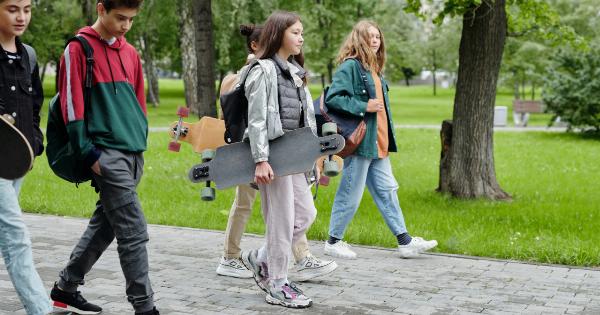It’s often a common observation that young comapanions tend to resemble or imitate their older counterparts in many ways.
Whether it’s their habits, interests, personality traits, or even physical appearance, the younger generation often tends to take cues from their elders. While it may seem like a coincidence or just a matter of influence, there is actually a deeper psychological basis behind this phenomenon.
The Role of Social Learning Theories
One of the most prominent explanations for why young companions resemble their older counterparts is based on the social learning theory.
This theory suggests that people learn through observation and imitation of others around them, particularly those who hold power and authority in their social group.
From early childhood, we begin to learn from the people closest to us, such as parents, siblings, and other caregivers. We observe their behavior, attitudes, and reactions to different situations, and then emulate them in our own behavior.
This process of learning through modeling continues throughout life, and we often turn to role models and mentors who we admire and respect.
The Role of Identity Formation
Another psychological basis for young companions resembling their older counterparts is related to identity formation. As we grow up, we develop a sense of who we are and who we want to be.
This process involves figuring out our values, beliefs, and interests, as well as our social identity as members of different groups.
In the process of identity formation, we often look to others around us to help us define ourselves. By observing the behavior and traits of others, we can gain insights into what qualities we find admirable and worth emulating.
For young companions, this process is particularly important as they are still in the process of forming their own sense of identity and may be more likely to mimic the behavior of those they look up to.
The Role of Shared Experience
In addition to learning through imitation and identity formation, another psychological basis for young companions resembling their older counterparts is related to shared experiences.
When people spend a lot of time together, they tend to develop similar habits, interests, and values. This is because they are exposed to similar situations and have shared experiences that shape their perspective.
For young companions, this phenomenon is especially significant, as they often have fewer experiences to draw from and may be more likely to rely on the experiences of those around them.
If they spend a lot of time with older companions who share certain interests or values, they may develop similar preferences as a result.
The Role of Cognitive Development
Another psychological basis for young companions resembling their older counterparts is related to cognitive development. As we grow older, our cognitive abilities and thinking processes change and develop.
This includes our ability to think abstractly, make connections between different ideas, and understand cause-and-effect relationships.
For younger companions, these cognitive abilities are still developing, and they may be more likely to rely on the guidance and instruction of their older counterparts.
Older companions can provide explanations and examples that help the younger generation make sense of the world around them and draw connections between different pieces of information. This can further contribute to the phenomenon of young companions resembling their elders.
The Role of Family Dynamics
Finally, the psychological basis for young companions resembling their older counterparts may also be influenced by family dynamics.
Family members often share similar values, attitudes, and behaviors, and they may model these behaviors for the younger generation. Additionally, family members may provide guidance and support that contributes to the development of the younger generation’s personality and habits.
Furthermore, family members often share similar physical characteristics, such as eye color, facial features, and body shape.
This can contribute to the perception that young companions resemble their older counterparts, as they may inherit certain physical traits from their family members.
Conclusion
The psychological basis for why young companions resemble their older counterparts is multifaceted and complex.
It is influenced by a combination of social learning theories, identity formation, shared experiences, cognitive development, and family dynamics.
While it may seem like a simple matter of imitation or influence, the phenomenon of young companions resembling their elders is deeply rooted in our psychological development and our relationships with those around us.






























